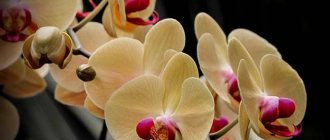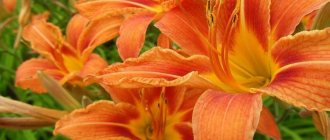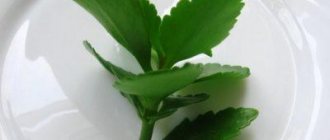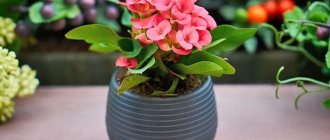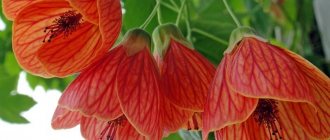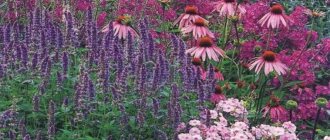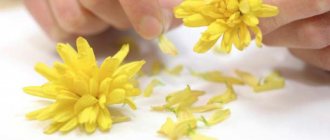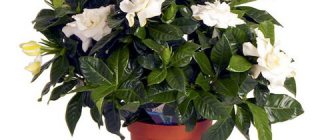Kalanchoe
One of the most widely represented species. Its relatives grow in Asia, Australia, and America. By nature, this plant is a tropical succulent.
Varietal crops are represented by both dwarf varieties and plants up to 50 centimeters high.
Flowering occurs during the winter months. And lasts up to 30 days. In order for it to shine with its purple, red, yellow and white colors, it is necessary that there is sufficient lighting. The room temperature must be maintained at 18 degrees.
Watering is carried out through the tray. After flowering ends, the flower stalks are cut off.
Kalanchoe has useful medicinal properties: it has an anti-inflammatory effect, hemostatic, and has a wound healing effect.
Carnations
In Russia, carnations are especially popular and in demand on the eve of the May holidays. And in Canada and America they officially symbolize Mother's Day. Also abroad, wedding banquet halls and arches are decorated with carnations. They are used to create bride's bouquets and grooms' boutonnieres.
Red carnations symbolize admiration for your loved one. White buds mean bright and pure love, good luck and innocent intentions. A gift in the form of a pink carnation will tell the owner that the giver will never forget her. Variegated carnations are a gift for parting.
Lilies - 5th place in the ranking
Luxurious and graceful lilies look truly royal, and therefore it is not surprising that they are very popular when composing compositions. Plants have a rich history and are often mentioned in legends. According to one of them, lilies are the tears of Eve expelled from paradise. Be that as it may, a bouquet with lilies will be an exquisite gift and an excellent way to express your feelings, especially since their meaning is appropriate: they symbolize purity, love and innocence.
Lilies have a pleasant, delicate aroma, so they are often used in solo bouquets to avoid mixing scents. This is one of the most popular options for wedding, as well as holiday and special occasion compositions. At the same time, the color of the flowers can be any: white lilies are very popular, but pink, orange and red buds are also in demand.
Jasmine
A climbing, evergreen, elegant, woody vine that requires constant support. The flowers of the plant evoke dreams and daydreams with their aroma, it is so gentle and pleasant. The most popular is the multi-flowered type of jasmine.
The plant must be placed in a bright room where direct sunlight does not penetrate. Like any vine, jasmine is sensitive to air humidity. Why is it necessary to have devices that humidify the air? Flowering is long-lasting, provided the habitat is stable.
The temperature ranges around 16 degrees. In the spring and summer, when the plant begins to grow, watering is carried out frequently. In autumn and winter, it is recommended to water the plant carefully so as not to “overwater” the beauty. During the growing season, the plant needs complex feeding, once a week .
Pruning jasmine is a very creative process, as you can give the plant a new shape by distributing the shoots along the support.
Daffodils
This is an integral part of any holiday bouquet. The ancient Greeks considered the daffodil a symbol of narcissism, and in Rome they covered the path of victorious commanders with daffodil petals.
2
Often, daffodils are widely used when creating solo compositions, since their stems emit a toxic substance that can kill other plants. But to decorate bouquets, you can safely use a variety of decorative elements, because daffodils have a rather modest appearance and therefore require additional decorations.
Ficus
The favorite flower of all kindergartens in the Soviet Union . It was rare that a child did not wipe the large, green, leathery, oval-shaped leaves with a soft rag. This is a rubber ficus.
Fast-growing, hardy, creeping or climbing shrub. It’s funny how it can climb a “moss pillar” or grow like a hanging plant.
Ficus Bejamina is a small-leaved relative of the rubber plant. A real dandy. Well, he doesn’t look like his relative at all. Its leaves can be either green or elegant with yellow spots on the leaf.
If variegated species are purchased, then it is advisable for them to have sufficient lighting, without direct sunlight hitting the leaves. It is necessary to water carefully and spray the leaves with water.
Spring tulips
Tulips Photo: Pixabay
Perhaps everyone will agree that tulips are truly spring flowers, an indispensable attribute of International Women's Day and other seasonal holidays. Compositions made from these flowers look gentle, romantic and very feminine. Tulips often become the centerpiece of bouquets with roses, alstroemerias, irises, hyacinths and even carnations.
For lovers of the classics, monochromatic mono-bouquets will suit you: yellow, pink or red tulips. Multi-colored combinations will help add bright spring colors: white, purple or orange.
Chrysanthemums
A noble flower that often adorns bouquets intended for adult women. This flower is very popular among both novice florists and professionals. Roses and gerberas are best combined with chrysanthemums. Red sprigs of rowan or other berries also look good with flowers. If you decide to make a round bouquet, it is strongly recommended to lay the flowers at an angle, and not parallel.
An ordinary chrysanthemum represents fun and relaxation. The giving person seems to say the phrase: “You are a great friend.” Red symbolizes love, white symbolizes truth, yellow symbolizes fragile love.
Orchid – Phalaenopsis
In wildlife they grow, attached to tree trunks or stones. At home, pots are used that are needed only to support the plant and preferably transparent.
With this plant, the charm of tropical vegetation appears in the house. A lover of these indoor plants will confirm that satisfactory well-being strongly depends on air humidity (no more than 40%). To maintain proper comfort, it is recommended to spray the leaves with a spray bottle , avoiding contact with flowers and rosettes. Watering is carried out by immersing the pot in water.
The flowering period lasts from 2 months to six months. Can live on the windowsill of northern, eastern, western windows. This miracle blooms 2 times a year. The rest period is not clearly expressed.
Exotic flowers for bouquets
Exotic flowers in bouquets are increasingly used by florists. Agapanthus, heliconia, calla lilies, plumeria, strelitzia, celosia and other flowers are found in the compositions.
The most popular among all exotics are orchids . The fragile flowers of orchids, native to Central America, symbolize beauty and love. These flowers look great in any composition and can be decorated with any decorations. There are many varieties of orchids. The following flowers are used in wedding bouquets: ascocenda, vanda, dendrobium, phalaenopsis. Bouquets with orchids retain their original appearance for a long time, which makes them attractive for wedding floristry.
No less popular in floristry is the combination of various herbs, fruits and berries with flowers.
Herbs in flower bouquets
To make bouquets, not only flowers are used, but also various herbs.
The most common herbs that are added to a bouquet are represented by the following list:
Gypsophila
Gypsophila is a delicate herbaceous plant bearing a large number of small white flowers. The plant symbolizes modesty. Florists offer bouquets with gypsophila for timid and young girls and brides. Openwork flowers can not only complement any bouquet, but also look great on their own. Delightful bouquets are obtained from a combination of gypsophila with orchids, ranunculus, roses and tulips.
Feather grass
Feather grass is an elegant fluffy grass, from which florists love to create various bouquets in combination with flowers. Most often, feather grass is used to decorate dry compositions. Feather grass with dried roses or wildflowers will fit into the design of any interior. Silk feather grass spikelets can also be seen in a living bouquet. Spring and autumn wedding compositions with this grass are created in soft pastel and silver tones.
Lavender
Lavender symbolizes love and happiness. The soft lilac and purple color and pleasant aroma of the plant attract attention. Lavender is a frequent guest in wedding floristry bouquets. In Provence style weddings, the bouquet looks stylish and original.
Tansy
Tansy is a medicinal herb with golden yellow inflorescences. The plant has a camphor-like smell, so it is preferred to make dry bouquets for indoors. Dried tansy is used to make autumn and winter compositions. Live tansy looks great with various meadow flowers, especially daisies. Keep tansy bouquets on an open terrace or in a frequently ventilated room.
Forbs No less popular are rosemary , sage and other herbs.
Florists use herbs not only to dilute bouquets, but also create entire compositions from several types of herbs with flowers. Bouquets of herbs make a good addition to rural and vintage weddings.
Geranium
Pelargonium. Aristocratic flower. Flowering begins from April to June, located in a sunny place with an air temperature of 18 - 20 degrees.
During abundant flowering, regular watering is required. Specific fertilizers are used every two weeks. As soon as flowering ends, you need to transplant the flower into a pot of slightly larger diameter.
But Russian housewives grow geranium on their windowsills as a crop that has beneficial properties and cut off the stems and flowers during the flowering period. They contain vitamin C, characteristic essential oils, tannins, pectins, tannins, gum . The main value is the bactericidal substances that the plant releases during growth.
Bioenergetics specialists claim that large, bright plants are able to absorb negative energy at home. The fragrant plant can stimulate blood flow and normalize blood pressure.
Peonies
Rarely a summer cottage or private yard is complete without beautiful peonies. These luxurious flowers are often used at wedding ceremonies and other celebrations. Experienced florists recommend combining these flowers with forget-me-nots, hydrangeas and daisies. Peonies represent a cheerful life and a successful marriage. The giving person seems to say the phrase: “I have nothing more to dream about.”
Gerber Jameson
Its name immortalizes the names of two naturalists. The first is Robert Jameson, who described it when he encountered a flowering herb in the flora of South Africa. And the second is the famous German scientist Gerber.
Previously, gerberas decorated bouquets of cut flowers. Currently, flower growers have bred indoor plants in pots, mainly represented by low-growing varieties.
The peduncle reaches 30 centimeters. On it there are “petals” around the yellow center. Needle, terry and non-terry. The coloring of which is so amazing that it can satisfy the most picky buyer.
Benefit. The leaves and stems contain the substance coumarin, which is used as a flavoring agent in tobacco production, in medicine, for drugs that affect blood clotting.
At home, it prefers good lighting, for example, on window sills: on the east or west side. Air temperature: 20 – 25 degrees. Does not tolerate drought. Watering is carried out through a tray with warm water.
If the daylight hours reach 12 hours, you can expect flowering within a month.
From November to February is a dormant period when fertilizing is not recommended; the plant should be kept at a temperature of about 15 degrees.
Azalea
Houseplant blooming in winter . It is at this time that bright, juicy inflorescences delight their owners with beauty.
The magnificence of azalea cannot be expressed in words. Flowers in a room sprinkled with fluffy snow look especially impressive, since their comfort zone is 12 degrees.
In addition, frequent watering during flowering is appreciated by the plant.
It is noteworthy that as soon as the time of frost has passed, the flower can be taken out to a dark place, where it will safely “sleep until October .
Gladiolus
Gladiolus is the flower of gladiators, whose bud resembles a sword or spear. This majestic plant is perfect for special occasions and decorates many gardens.
Nowadays, gladiolus is very popular in luxurious bouquets and compositions. When choosing a shade, give preference to red for a declaration of love, pink will tell about your admiration for your chosen one, compassion and even maternal love, white symbolizes innocence and purity, and yellow - lightness and cheerfulness.
Previous post Next post

